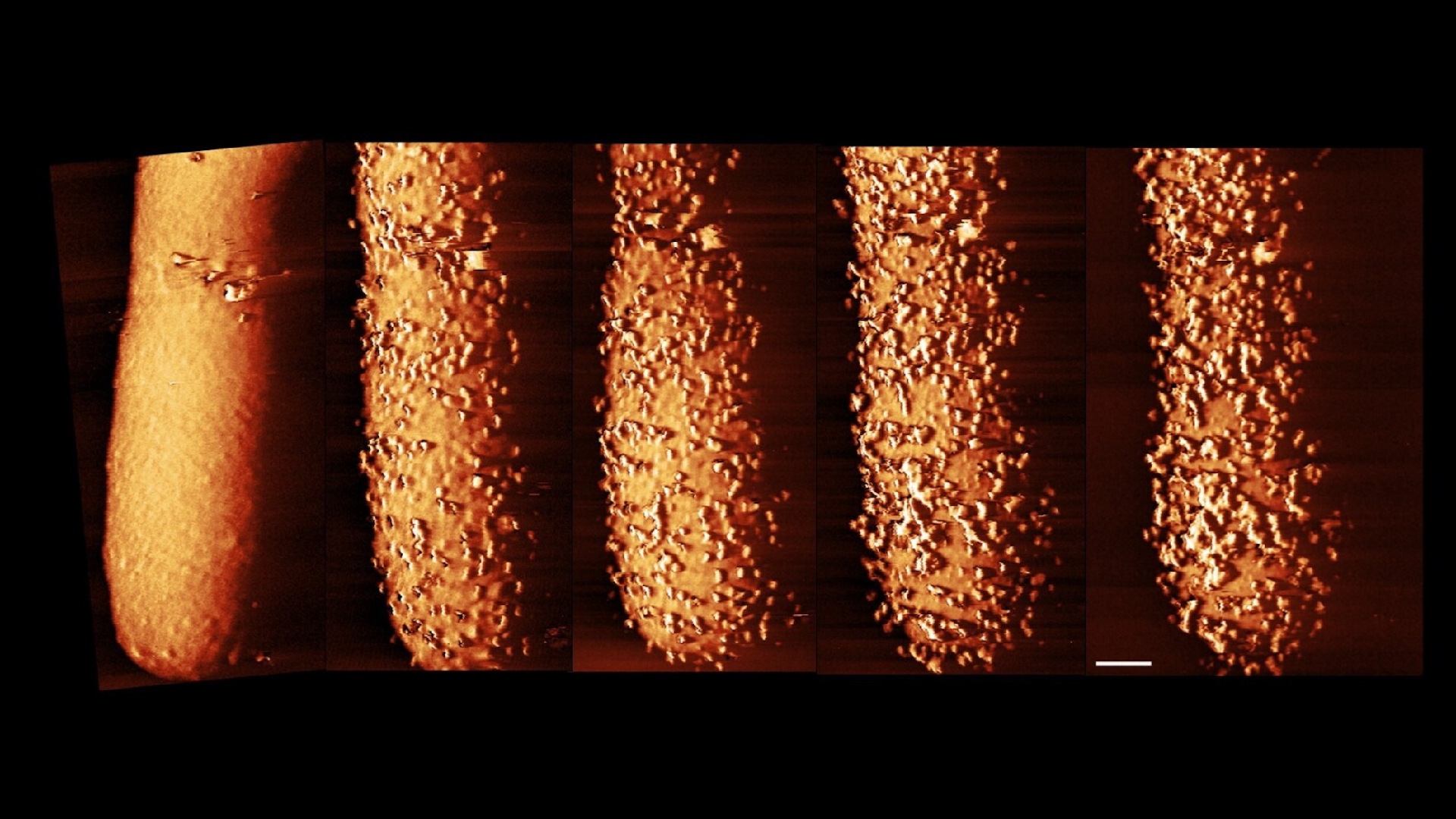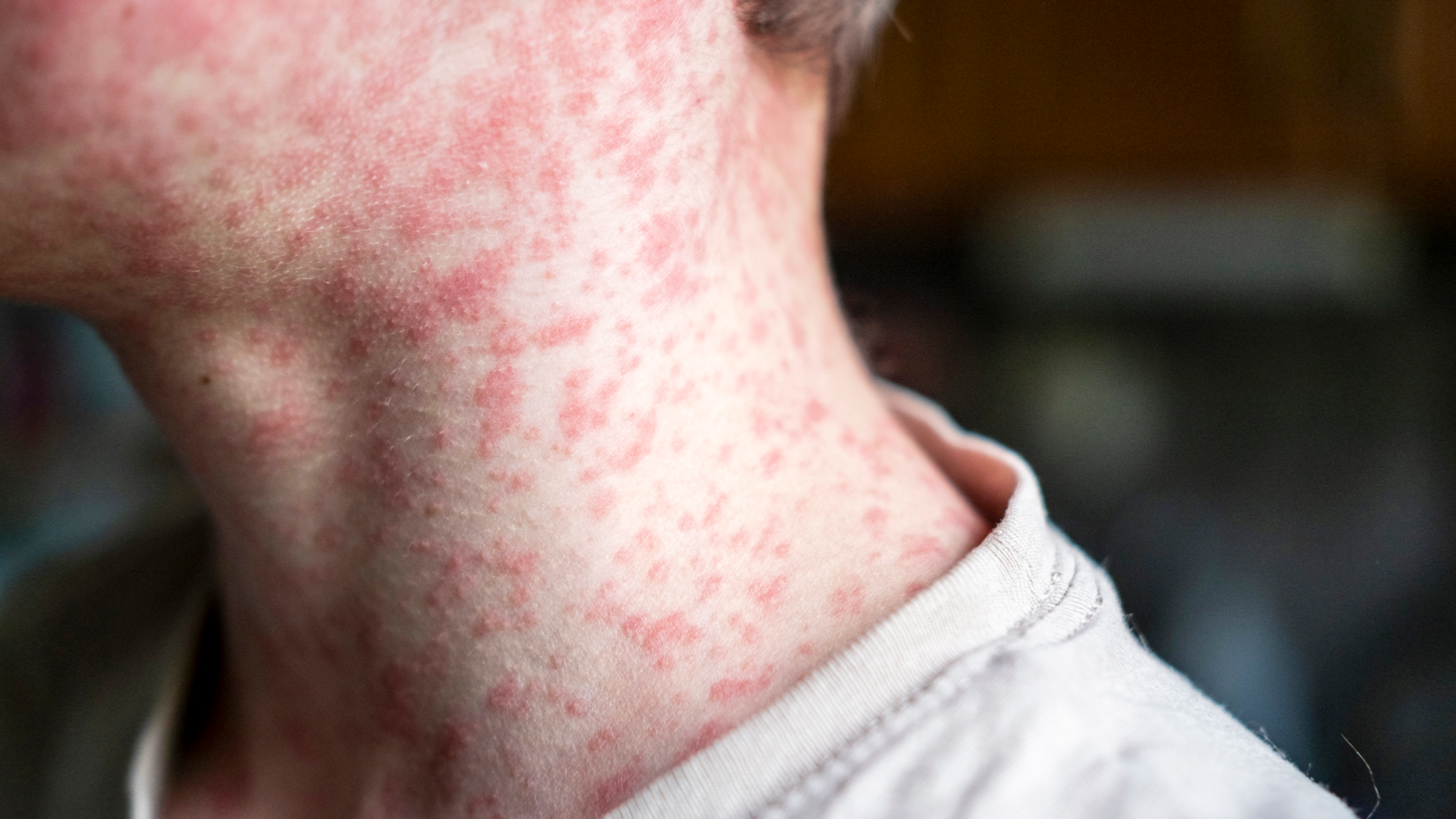Striking images capture an antibiotic slaying bacteria in real time
Scientists have captured images of polymyxins, a type of antibiotic, disrupting and infiltrating the membranes of disease-causing bacteria.

Scientists have released new images showing, in incredible detail, antibiotics defeating disease-causing bacteria by piercing the microbes' membranes and infiltrating their innards.
The antibiotics, called polymyxins, were observed forcing the armored membranes around Escherichia coli bacterial cells to grow bumps and bulges. The bacteria then shed their outer membranes, leaving space for the antibiotic to enter the cells.
"It was incredible seeing the effect of the antibiotic at the bacterial surface in real-time," study co-author Carolina Borrelli, a doctoral student studying biophysics and microbiology at University College London (UCL), said in a statement.
Gram-negative bacteria are a broad class of microorganisms that have two membranes surrounding each cell; the two membranes sandwich a cell wall. E. coli, Salmonella, and Shigella — a type of bacteria that causes dysentery — are all examples of gram-negative bacteria.
Polymyxins can help treat infections caused by gram-negative bacteria that have gained resistance to other antibiotic drugs; they work by targeting the outer of the bacteria's two membranes, which act as a kind of armor that keeps antibiotics out. But exactly how the antibiotics slip past this armor isn't well understood.
"Polymyxins are an important line of defense against Gram-negative bacteria, which cause many deadly drug-resistant infections," study co-author Bart Hoogenboom, a biophysicist at UCL, said in the statement. "It is important we understand how they work."
In the new study, published Sept. 29 in the journal Nature Microbiology, the team of researchers captured images of the antibiotic in action. Using a technique known as atomic force microscopy, the scientists passed a tiny needle back and forth over the bacteria to map out their shapes. This let them see how the bacteria changed as the polymyxin attacked.
Get the world’s most fascinating discoveries delivered straight to your inbox.
Polymyxins forced E. coli to quickly grow tiny bumps and protrusions on its outer membrane, the team found. As these bumps grew, the bacterium shed its armor, leaving gaps in that outer membrane through which antibiotics could enter and kill the cell.
"Our images of the bacteria directly show how much polymyxins can compromise the bacterial armor," Borrelli said. "It is as if the cell is forced to produce 'bricks' for its outer wall at such a rate that this wall becomes disrupted, allowing the antibiotic to infiltrate."
Importantly, the polymyxins can only target bacteria that are actively growing, not those that have gone into a dormant state. Bacteria sometimes enter a state of dormancy to deal with difficult conditions, surviving years without eating, growing or reproducing, only to wake back up when conditions are more favorable. While dormant, bacteria can't grow their outer membrane armor, so the antibiotic couldn't ramp up production the same way it could in actively growing bacteria.
"Our next challenge is to use these findings to make the antibiotics more effective," Hoogenboom said. "One strategy might be to combine polymyxin treatment — counterintuitively — with treatments that promote armor production and/or wake up 'sleeping' bacteria so these cells can be eliminated too."
This article is for informational purposes only and is not meant to offer medical advice.

Skyler Ware is a freelance science journalist covering chemistry, biology, paleontology and Earth science. She was a 2023 AAAS Mass Media Science and Engineering Fellow at Science News. Her work has also appeared in Science News Explores, ZME Science and Chembites, among others. Skyler has a Ph.D. in chemistry from Caltech.
You must confirm your public display name before commenting
Please logout and then login again, you will then be prompted to enter your display name.
